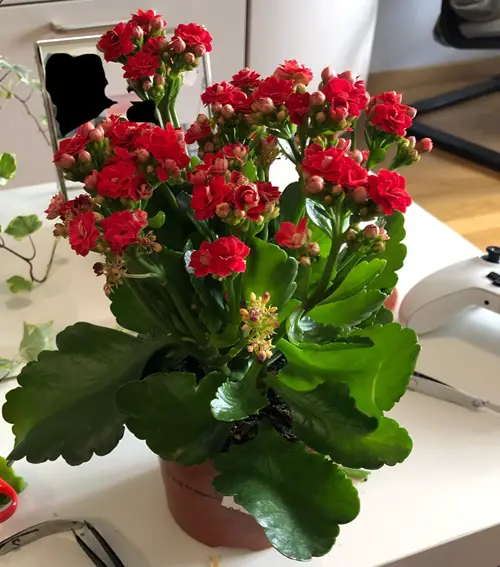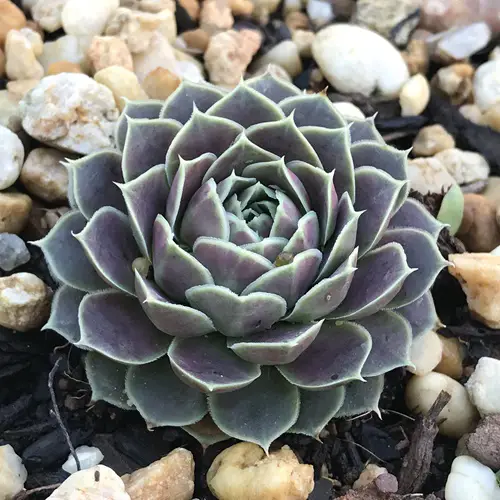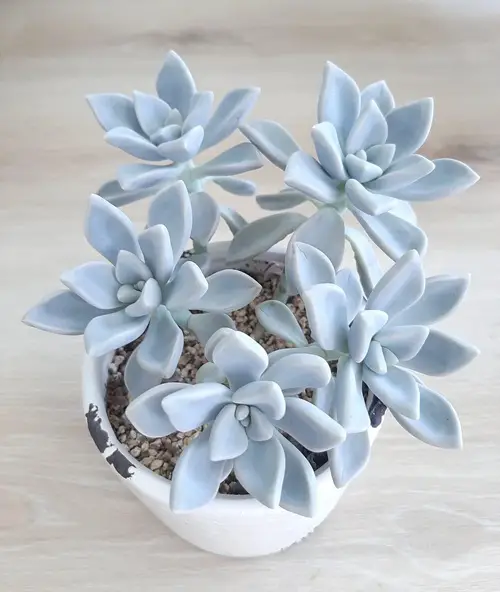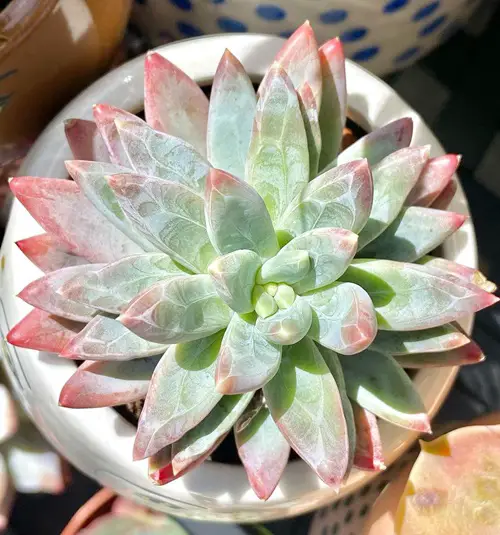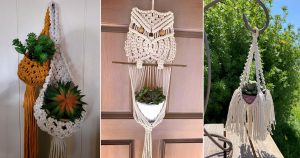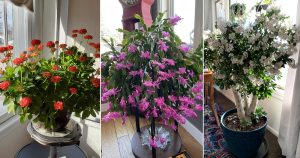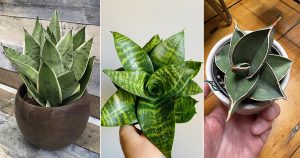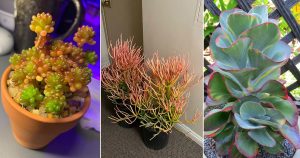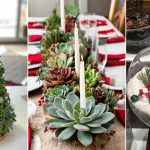Love flowers? Meet succulents with petal like leaves that look just as pretty and will be the cherry on top for your garden!
Have you ever seen a plant that looks like a flower? Succulents with petal-like leaves are exactly that! From rose-like Echeverias to soft, dainty Graptopetalums, these plants bring a flower-like beauty without even blooming.
Succulent With Petal Like Leaves
1. Flaming Katy
Botanical Name: Kalanchoe blossfeldiana ‘Calandiva’
Flaming Katy is a winter bloomer that can give colors with its clusters of small, colorful flowers. It flowers in shades ranging from orange and yellow to red and white, often during the colder months when most plants are dormant. Its vibrant, overlapping leaves mimic the look of flower petals, which is why it shines on this list.
If you want it to bloom again, place it in a dark room for around 14 hours a day for about six weeks—this tricks the plant into thinking it’s time to flower.
Note: Flaming Katy is toxic to pets and humans. Keep it away from curious nibblers!
2. Perle Von Nurnberg Echeveria
Botanical Name: Echeveria ‘Perle von Nurnberg’
This beautiful echeveria has pastel-colored rosettes with shades of lavender and pink that seem to glow under the right light. It thrives best in bright, indirect light but can also handle a few hours of direct sun daily. And the symmetrical layers of its rosettes look so much like flower petals.
What makes it even more special are its flowers—delicate coral-colored blooms that appear in late spring through summer. Its pups, or offsets, grow around the base and can be easily propagated to expand your collection or share with friends.
3. Black Rose Aeonium
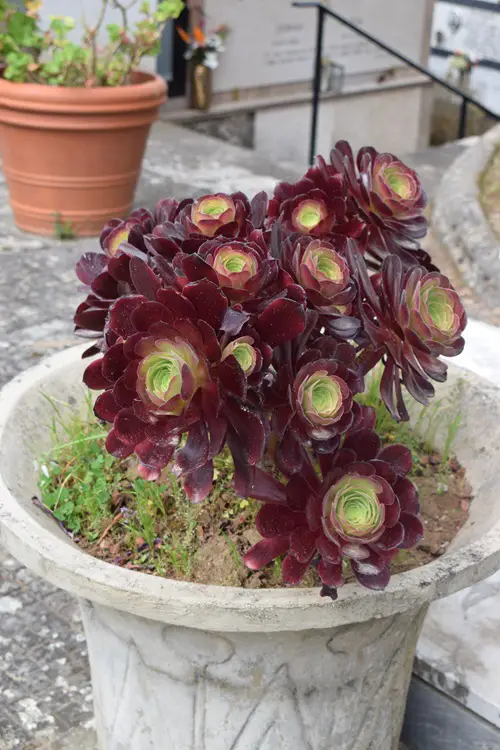
Botanical Name: Aeonium arboreum ‘Zwartkop’
If you love a living bouquet of deep, dark purple roses then Black Rose Aeonium is just for you! This succulent grows up to 3 feet tall and thrives in sunny, warm climates. Just remember, these beauties need a slow introduction to sunlight to avoid sunburn.
During spring, it surprises you with bright yellow, cone-shaped flowers that beautifully contrast with its dark foliage.
Caution: If you live in colder climates, bring them indoors before the mercury dips below 40°F.
4. Purple Haze Sempervivum
Botanical Name: Sempervivum heuffelii ‘Purple Haze’
Have a purple patch with this cold-hardy succulent that’s as tough as it is stunning. Its color shifts throughout the year, ranging from pale green in summer to rich purples and pinks during cooler months, giving your garden an ever-changing palette.
This rosette-forming succulent produces offsets that cluster tightly, making Purple Haze perfect for rock gardens or alpine settings. The closely packed, rounded leaves resemble flower petals, giving it that classic “blooming” look all year round. Just remember to protect it from soggy winter soil to keep those colors popping.
5. Ghost Plant
Botanical Name: Graptopetalum paraguayense
The Ghost Plant is a resilient succulent known for its powdery, pale gray leaves that sometimes take on hints of pink or blue under stress. It’s a fast-growing plant that forms sprawling clusters of rosettes. A fascinating trait is its ability to regenerate—dropped leaves can root and grow into new plants.
Its edible leaves were once used in Mexican salads, adding a tangy crunch to dishes.
6. Little Jewel Pachyveria
Botanical Name: Pachyveria ‘Little Jewel’
Little Jewel lives up to its name with its silvery-blue leaves edged with hints of violet. Compact and low-growing, it’s perfect for small gardens or as a centerpiece on your desk. In winter, it rewards you with warm-toned flowers, adding a bit of sunshine to the season. Its plump, overlapping leaves align like flower petals, giving it a jewel-like look.
This hybrid of Pachyphytum and Echeveria is a great choice for small spaces or fairy gardens. It is drought-tolerant but thrives with occasional watering during its growth phase. Plus, it prefers bright light and well-drained soil for healthy growth.
7. Rainbow Bush

Botanical Name: Portulacaria afra ‘Variegata’
Rainbow Bush is a slow-growing succulent that features small, oval leaves splashed with cream and green on reddish stems. Resembling a miniature tree, it’s often used in bonsai and landscaping designs. Perfect for hanging baskets or as a ground cover in warmer climates, it thrives on minimal care and can even survive mild droughts.
The compact, oval leaves grow in symmetrical clusters, resembling a floral look. While it prefers bright, indirect light, too much direct sun may scorch its delicate leaves.
8. Coppertone Stonecrop
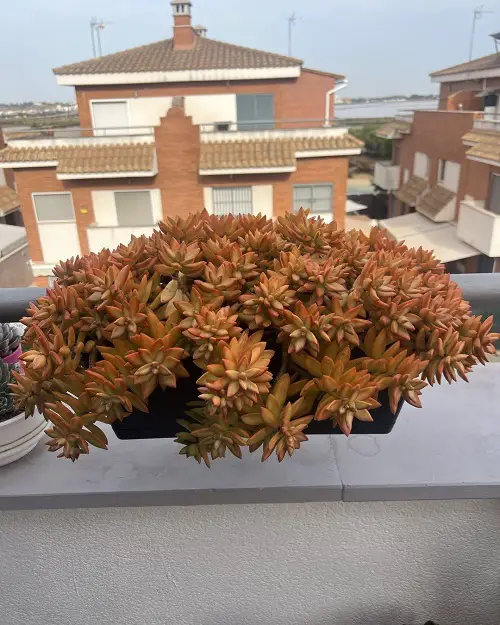
Botanical Name: Sedum nussbaumerianum
This bold succulent is famous for its orange-hued leaves that intensify with more sunlight. Coppertone Stonecrop is a fast-growing plant ideal for rock gardens, borders, or pots. During late winter and early spring, it produces clusters of star-shaped white flowers and provides a beautiful contrast with its fiery foliage.
Its tightly packed, colorful leaves mirror the structure of flower petals. Plus, it’s drought-tolerant but benefits from occasional watering during its active growth phase.
9. Dondo Echeveria
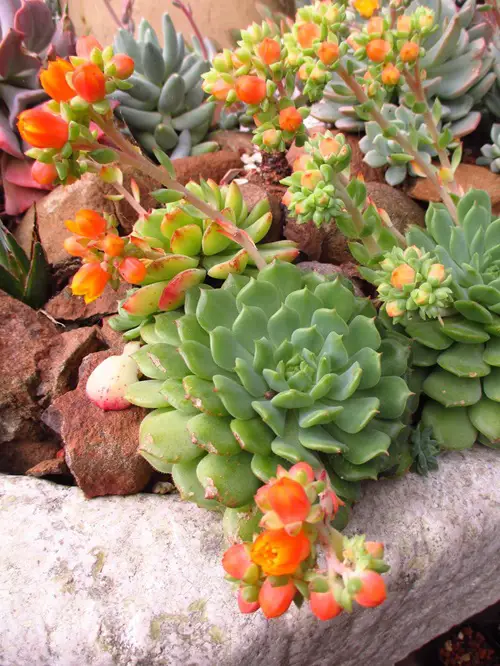
Botanical Name: Echeveria dondo
Dondo forms compact rosettes with soft green leaves and blooms with sunny yellow flowers in late winter. It’s a versatile choice, thriving in coastal gardens or cozy indoor spaces, and is remarkably low-maintenance.
The rounded, petal-like leaves of its rosette are why it makes the cut here. But, you’ll have to protect it from frost and harsh winds for the healthiest growth.
10. Variegated Ceropegia
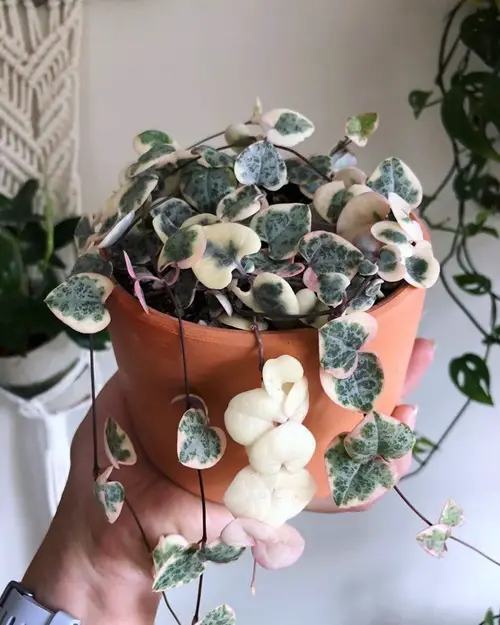
Botanical Name: Ceropegia linearis subsp. woodii ‘Variegata’
Also famous as the String of Hearts, this plant is a bonus for you with its trailing vines adorned with heart-shaped leaves marbled in silver. Its cascading growth makes it a natural fit for hanging baskets or high shelves. Plus, it may produce tiny lantern-shaped flowers during summer.
Fact: The small tubers along its vines, nicknamed “beads,” can be planted to propagate new plants.
11. Petal Leaf Succulent
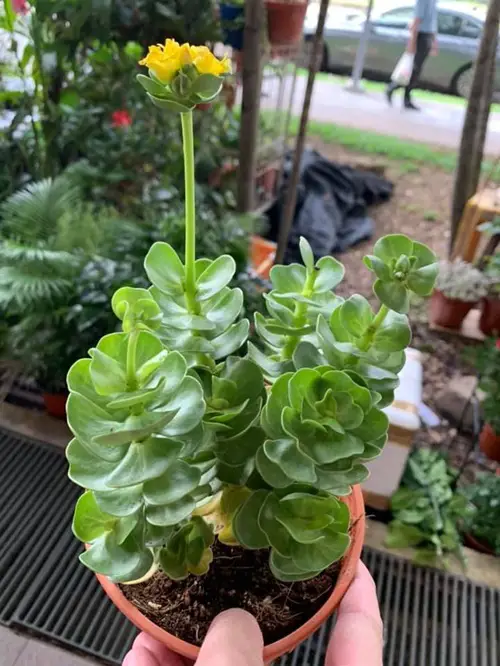
Botanical Name: Portulaca molokiniensis
The Petal Leaf Succulent is a native Hawaiian plant with bright green, rounded leaves that grow in symmetrical rosettes. It produces small yellow flowers that are just like the icing on the cake and give you a tropical vibe in any setting.
Additionally, its rosette of rounded leaves looks like a perfect green bloom, earning its name and place on this list. Despite its exotic appearance, it’s easy to care for and thrives with minimal attention.
Caution: It’s toxic if ingested, so keep it out of reach of pets and children.
So, which one do you think will be the next star of your garden? Share your thoughts and tips in the comments below!

